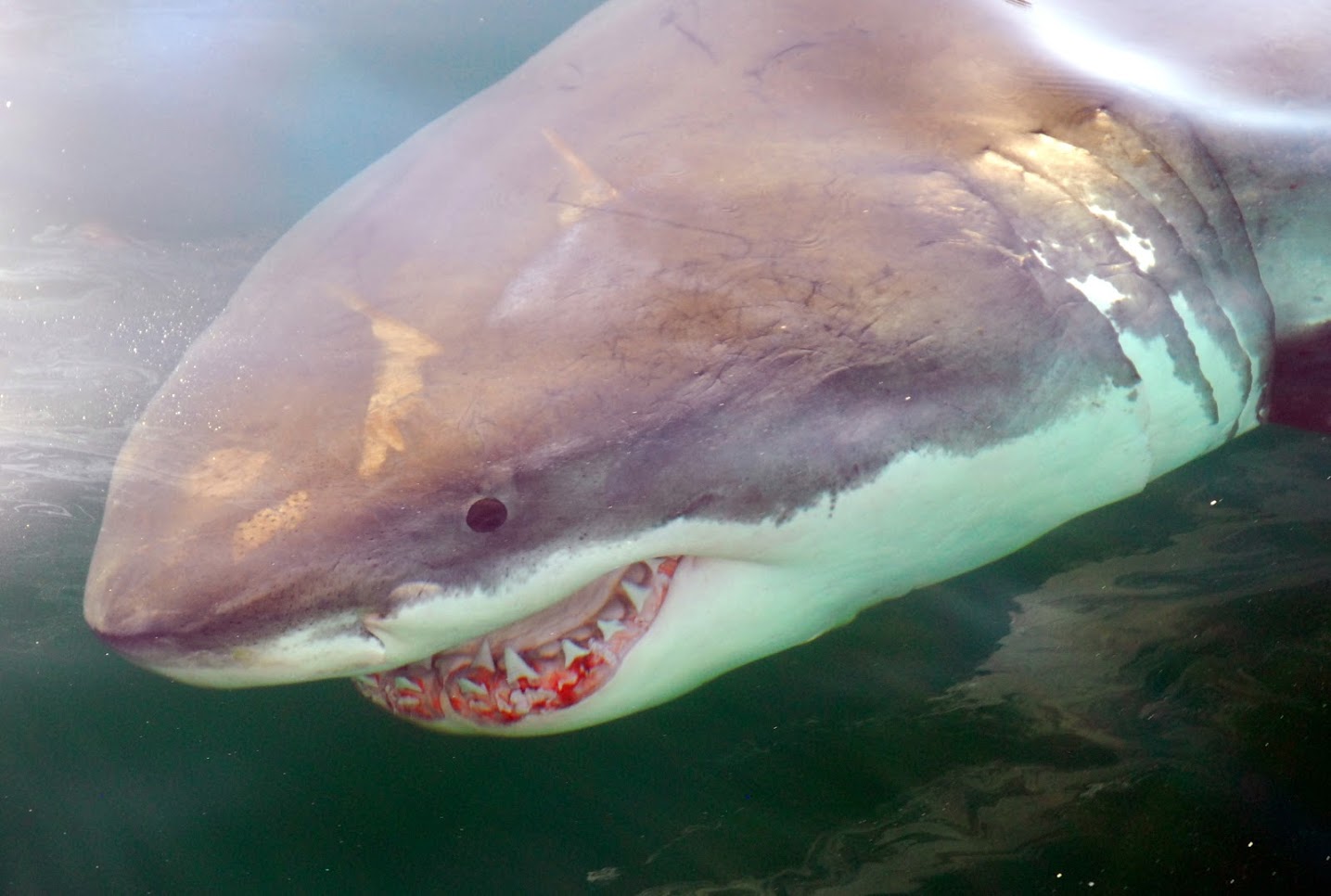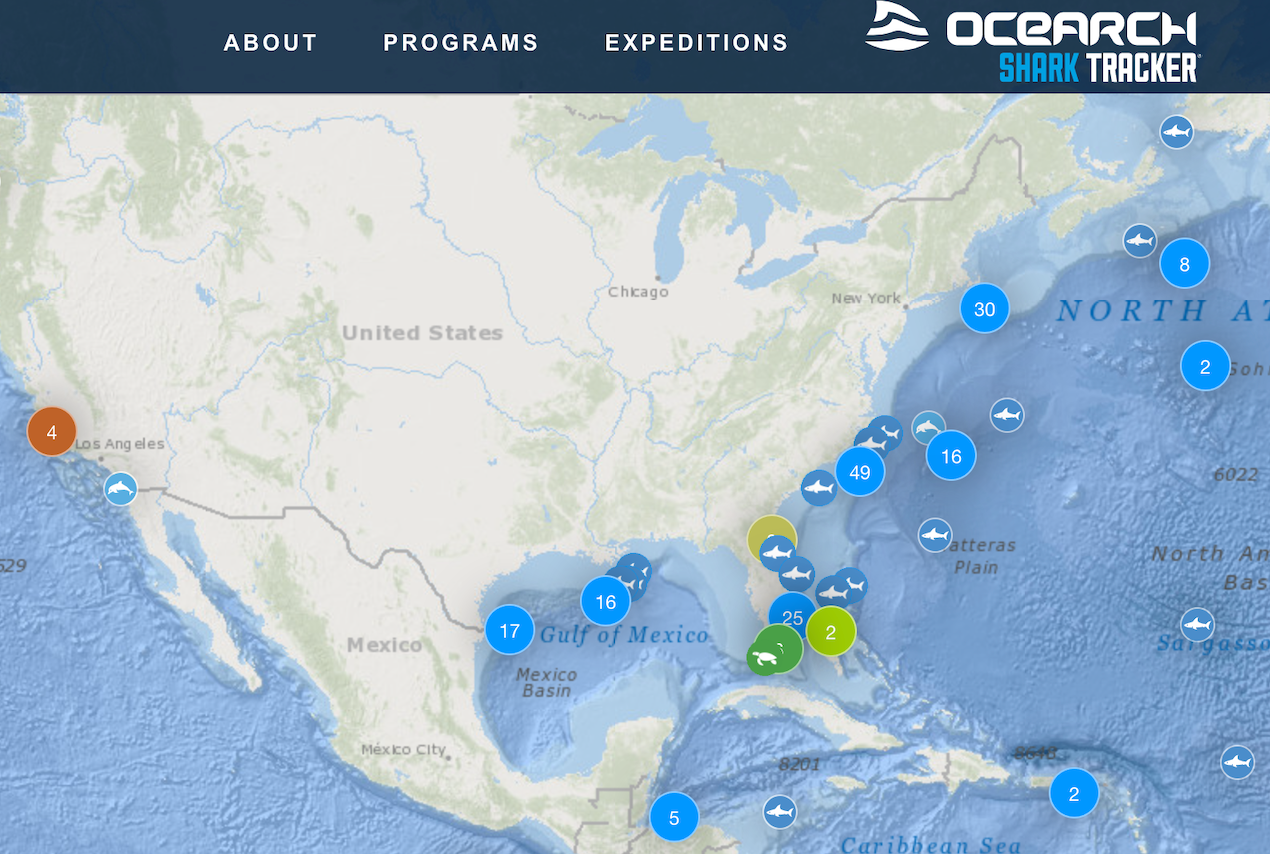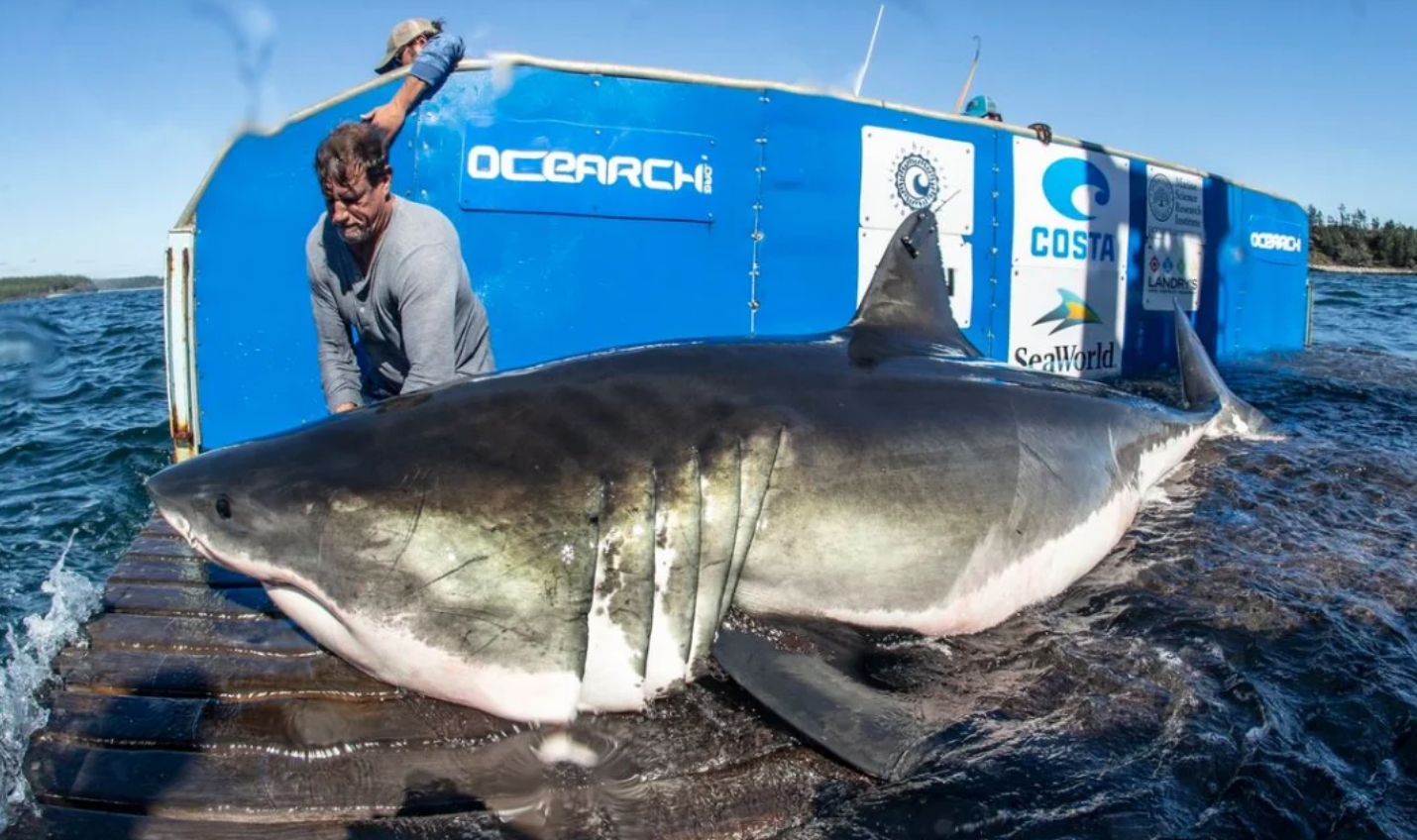North Atlantic Researchers Track 48 Great White Sharks

Shark researchers have a strong understanding of the great white shark’s migration patterns up and down the Atlantic coast after analyzing the movements of 48 white sharks tagged off Massachusetts and in other areas along the east coast.
OCEARCH and its research team in what has been called a “landmark” study have shown this specific population of white sharks made predictable annual migrations between Canada and the Gulf of Mexico.
The sharks spent summer and fall primarily in coastal waters off Cape Cod and the Canadian Atlantic coast feeding on seals before heading south to warmer waters off the southeast U.S. from South Carolina to the Gulf of Mexico.

Creatures of Habit
Scientists discovered that white sharks return to the same location in subsequent years and they use navigational cues to migrate over thousands of miles every year.
The sharks visit critical habitats for feeding, growing and reproduction, “highlighting the importance of protecting those areas where the sharks frequently return,” the researchers said. That includes the predators’ summer residency along the Massachusetts coast.
“By collecting vital data for understanding the ecology and life history of white sharks in the western North Atlantic, we have identified this population’s critical habitats and the linkages between these habitats, as the animals grow and thrive,” said the study’s lead author, Bryan Franks, associate professor of marine science at Jacksonville University in Jacksonville, FL.

“These results are invaluable in developing effective management and conservation strategies in the face of a changing ocean, for the good of the sharks, their ecosystem and ultimately, us,” Franks added.
High-Tech Tracking
The researchers tracked 48 large juvenile to adult white sharks between 2012 and 2020, using a combination of satellite-linked and acoustic telemetry.
Overall, the data showed that white sharks showed repeatable and predictable movement patterns, although there was variation related to the animals’ sex and size. While most sharks undertook an annual migratory cycle with the majority of time spent over the continental shelf, some individuals — particularly adult females — made extensive forays into the open ocean as far east as beyond the Mid-Atlantic Ridge.

The researchers believe the adult females move far offshore when pregnant, potentially to avoid interaction with other sharks. The scientists don’t see evidence of mating during the late summer and early autumn along Massachusetts and believe that mating happens along the coast of North Carolina to Florida in late winter to early summer.
Enhanced Conservation Efforts
OCEARCH chief scientist Bob Hueter said the next step is to “get this paper in front of policymakers engaged in everything from fisheries management to public safety concerns in the western North Atlantic.”
“After decades of decline, the white shark population of this region is slowly rebuilding, thanks to conservation efforts over the past 25 years,” added Hueter who is a co-author of the study. “This requires us to evolve our policy recommendations for their conservation and management and our paper provides the framework to inform that process.”